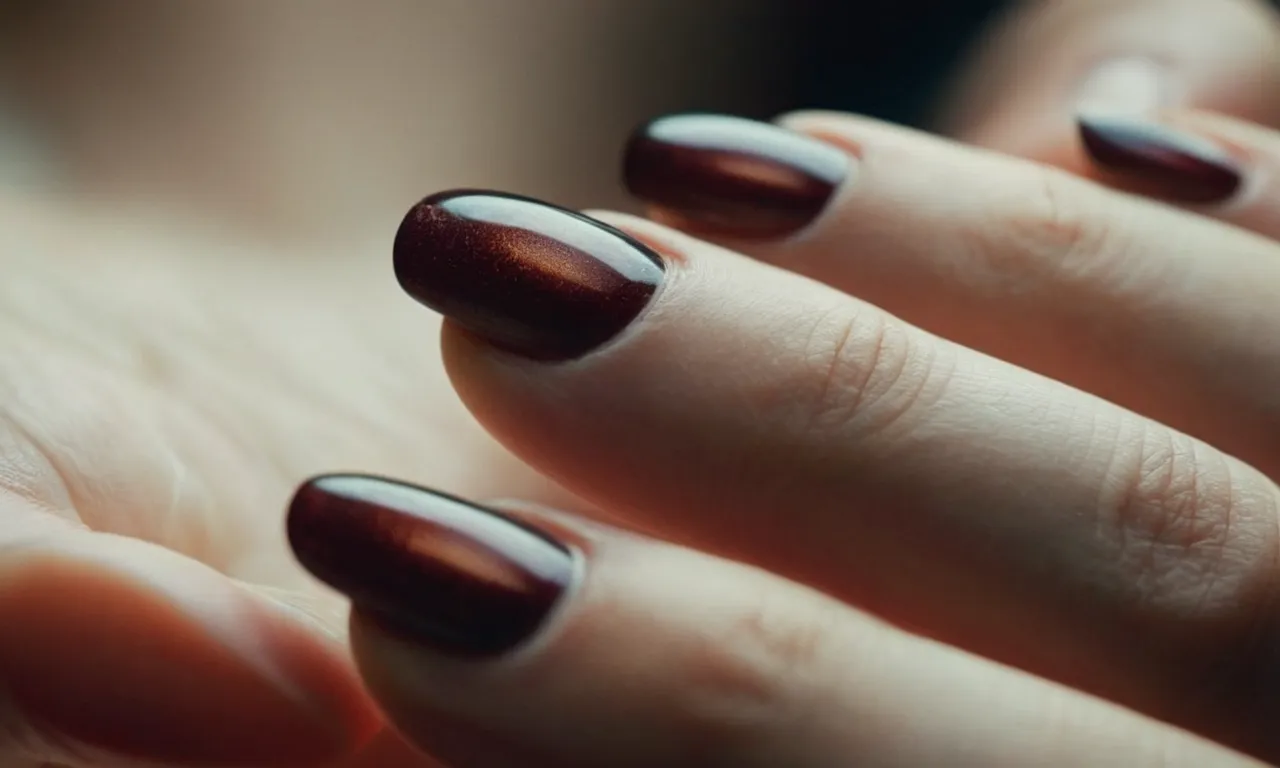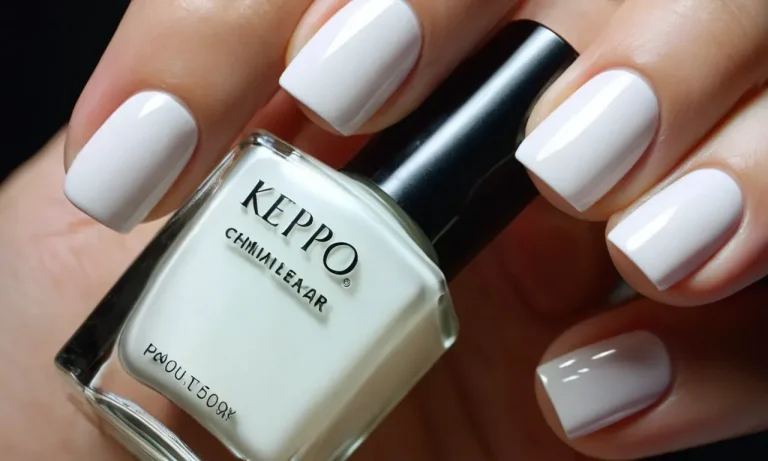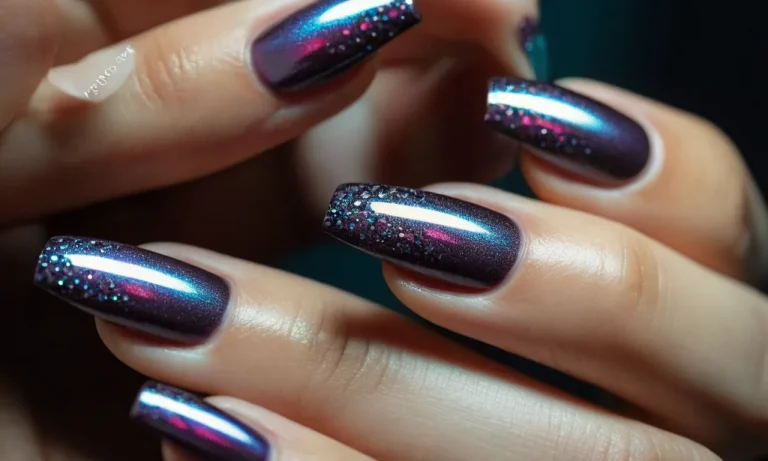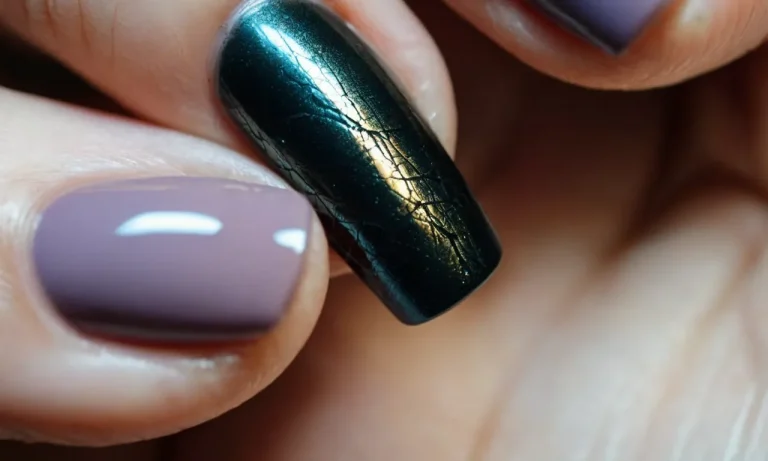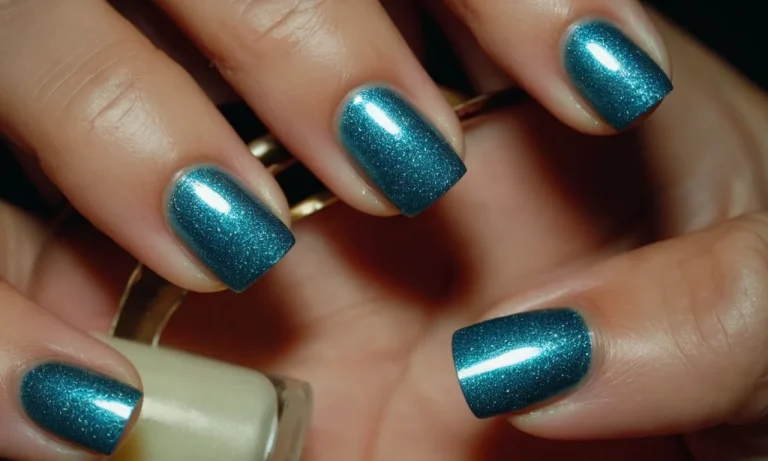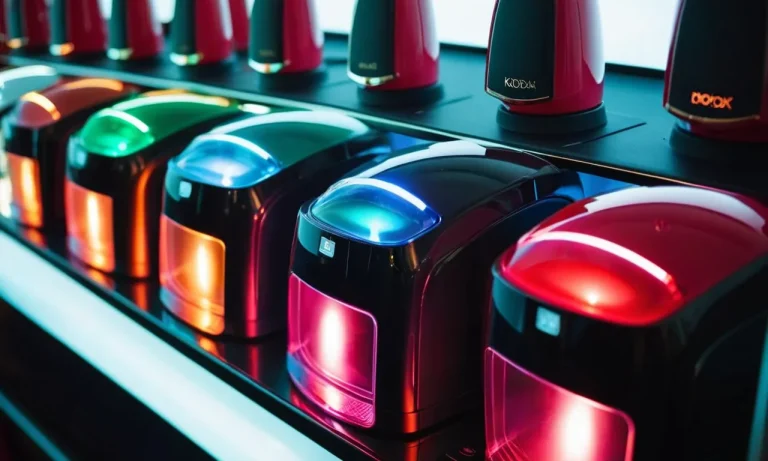Can You Put A Fake Nail On Skin? Everything You Need To Know
Have you ever wondered if you could stick that loose press-on nail right onto your skin instead of your actual nail? Maybe you lost a fake nail and didn’t have any nail glue around to re-apply it. Or perhaps you just like the look of fake nails on skin.
The short answer is yes, you can temporarily adhere a fake nail directly onto skin using gentle medical tape or a small dab of eyelash glue. However, this is not recommended for long-term wear for safety and health reasons.
In this comprehensive guide, we’ll cover everything you need to know about applying fake nails onto bare skin. We’ll discuss the different methods, pros and cons, safety considerations, alternatives, and care recommendations when considering this nail hack.
Methods for Applying Fake Nails to Skin
Medical Tape
One creative way to attach fake nails to your skin without glue is by using medical tape! This clear adhesive tape offers a gentle and temporary method for sticking on fake nails. Simply cut strips of medical tape and place them over the edges of the fake nails, then press onto your skin.
The benefit of medical tape is that it won’t damage or irritate your skin like some adhesives. Just be sure to stick the tape only to clean, dry skin for best results. Medical tape typically stays on securely for up to a day of wear. Who knew tape could be so handy for faux nails!
Eyelash Glue
If you want a stronger bond than medical tape, reach for some eyelash glue! This adhesive is designed to securely hold delicate eyelash extensions in place, so it works great for fake nails too. Just use a small amount of eyelash glue (much less than you would for lashes!)
on the back of the nail and quickly press onto your skin. Avoid getting glue on your actual nail bed. The key is to hold the fake nail in place firmly for 30 seconds until the eyelash glue sets. This creates a nice strong, flexible hold that can last a couple days.
The glue peels off skin easily when you’re done wearing your fabulous nail art!
Nail Glue
For the strongest, longest-lasting bond, use actual nail glue adhesive. This is the same stuff used to apply tips and acrylics in salons. Brush a thin layer of nail glue onto the back of your fake nail and hold it steadily against your skin for about 10 seconds.
The glue will form a tight grip that can last over a week in many cases! Nail glue is formulated to bond securely yet flex with the natural movements of your hands. Just be very careful not to get any on the surrounding skin.
Avoid skin irritation by gently peeling off the nails and adhesive after wear. Pro tip: lightly buff the back of the nails so the glue adheres better!
Pros and Cons of Putting Artificial Nails on Skin
Applying artificial nails directly on skin without using proper nail glue can seem like an easy shortcut, but it does come with some risks. Here are a few key pros and cons to consider:
Pros
- Convenient and fast application
- No need to purchase nail glue
- Nails stay on temporarily without glue
Cons
- Higher risk of infection since the nails are not properly adhered
- Nails may fall off easier without secure glue bond
- Can damage skin when removing the nails
- Skin irritation or allergic reaction to nail materials is more likely
While using artificial nails without glue may seem like an easy, time-saving method, legitimate nail salons never recommend applying nails directly on live skin. The risks of infection and skin damage make proper nail glue application a safer choice overall. Still deciding?
Consider consulting your dermatologist first to see if your skin can tolerate adhesive nails sans glue.
Is It Safe? Health Risks and Precautions
Allergic Reactions
Applying fake nails directly on skin can cause allergic reactions in some people. The main culprit is cyanoacrylate, the adhesive used in many fake nails. It contains chemicals that can irritate the skin and cause redness, swelling, blisters, peeling and itching.
Those with sensitive skin or allergies should do a patch test before using fake nails on skin.
Acrylics and gel polishes used in fake nails also contain chemicals like methacrylates that can trigger allergic contact dermatitis. The reaction may develop over time with repeated exposure. Rash, redness and itching are common symptoms.
In severe cases, the skin reaction can spread beyond the area of contact.
To avoid allergic reactions, choose hypoallergenic fake nails with natural, non-toxic glues. Do patch tests each time you switch adhesives or nail polishes. Discontinue use if any irritation develops.
Infection Risk
Applying fake nails on open wounds or broken skin increases the risk of infection. Bacteria and fungi can enter through damaged skin and cause local infections or even sepsis in vulnerable individuals.
Nail salons that don’t follow hygienic practices are breeding grounds for dangerous bacteria like staphylococcus, streptococcus, E. coli, hepatitis B and HIV. Sharing tools can transmit infections from person to person. Reusing dirty tools harbor microbes.
To avoid infections, use sterile application tools and disposable fake nails. Never share tools with others. Wash hands thoroughly before and after application. Keep skin intact – avoid applying on wounds, scratches or cracked skin.
Nail Damage
Gluing fake nails directly on your nails can damage the natural nails over time. The adhesive remover chemicals used to take off fake nails can dry out and peel the natural nails. Acrylics and gel polish can make natural nails brittle.
Repeated use leads to thinning of nail beds. It becomes difficult for natural nails to grow back healthy after they’ve been subjected to fake treatments for too long.
Give your natural nails a break once in a while. Apply nail strengtheners and moisturizers to nourish them back to good health. Avoid excessive filing and harsh chemicals. See a dermatologist if your nails remain damaged.
Alternative Options for Nail-Free nail Looks
If you want to sport stylish nails but don’t want the hassle and potential damage of fake nails, there are several nail-free options to give your natural nails a decorated look. These alternative nail fashion techniques allow you to unleash your creativity without harsh glues or acrylics.
Nail Stickers
Nail stickers, also called nail wraps, provide an easy way to accessorize your nails. These thin, printed stickers come in a variety of patterns, shapes, and designs. They stick to your nail using a gentle adhesive that peels off without damage.
Luxury nail sticker brands like ManiMe even offer customized, made-to-order full nail sticker sets tailored to your exact nail sizes and shapes.
Nail Wraps
Nail wraps take stickers a step further by covering the entire nail. These thin, flexible nail-shaped stickers are made of high quality vinyl that adheres gently to the nail. Brands like Color Street offer a huge array of colors, glitters, patterns and even French manicure nail wraps.
Thanks to recent innovations, many nail wraps can last up to 10 days without chipping or peeling.
Nail Stamping
Nail stamping provides a fun, artistic way to decorate your nails using etched stamp plates and pigmented polishes. After painting your nails with a base color, you pick up pigment from the stamp plate design using a rubber stamper. Then you transfer and “stamp” the design onto your nail.
The possibilities are endless when you combine different plates and polish colors. Nail stamping takes practice, but lets you change up your manicure whenever the mood strikes.
Henna Tattoos
Henna has been used for temporary body art for centuries. As a natural dye, henna safely and gently stains the skin to create beautiful painted nail designs. Henna nail tattoos last longer than polish at up to three weeks.
While not quite as versatile as nail polish options, henna designs have an artistic, Bohemian vibe. From fine filigree patterns to large statement symbols, henna nail tattoos adorn your nails with eye-catching artwork.
All of these alternatives to fake nails allow you to decorate your nails without harsh chemicals or damage. They are great options whether you want to give your nails a break between polishings, heal weak or brittle nails, or just express yourself with different exciting looks.
With stickers, wraps, stamping and henna you can change your nail style almost as often as your mood.
Caring for Fake Nails on Skin
Keeping It Clean
Proper hygiene is crucial when wearing fake nails on skin. Gently wash the area around the nails daily with soap and water to remove oil, dirt, and bacteria that can cause infection or irritation (Staphylococcus aureus is a common culprit). Pat dry thoroughly afterwards.
Consider using an antibacterial cleanser containing ingredients like tea tree oil as well.
Check that moisture isn’t building up under the nails, which can breed germs – carefully lift the edges to inspect. Letting the skin breathe for periods of time is advisable too. Remove the nails before showering or swimming, and clean the backing adhesive regularly.
Avoid Picking
As tempting as it is, refrain from picking at the nails or surrounding skin as this damages the tissue. Not only can picking cause pain, bleeding and introduce bacteria, it can actually spread infections deeper. And, any trauma to the skin hinders proper healing.
If you notice cracking, swelling or discharge, see your doctor since an infection may be developing. Peeling nails off forcefully pulls at skin as well, so have a professional remove them if need be. Protect skin integrity by filing down rough edges that snag.
Moisturize the Area
Moisturizing protects skin underneath fake nails, keeping it supple and less prone to injury. Apply lotion once or twice daily, gently massaging it around nail edges where adhesive adheres. Petroleum jelly also works for added moisture.
Ensure moisturizers do not contain alcohol or fragrances, which dry out skin.
Consider products with ceramides, hyaluronic acid and colloidal oatmeal. If skin becomes red, itchy or inflamed, hydrocortisone cream should help calm irritation, but discontinue use after a week. Stay diligent with aftercare while sporting fake nails on bare skin to avoid issues.
Conclusion
While it may seem like a quick nail hack to just stick that fake nail right onto your bare skin, this technique does come with some risks and downsides. Using gentle medical tape or lash glue can work in a pinch, but shouldn’t be done long-term.
For a safer alternative, consider nail stickers, wraps, stamping designs, or even tiny henna tattoos. Or better yet, apply fake nails the regular way with nail glue onto your actual nails for best adhesion and less chance of irritation issues.
We hope this guide gave you a comprehensive overview on the dos and don’ts of adhering artificial nails directly to skin. Our advice is to proceed with caution using this nail hack or explore other creative nail looks that don’t require adhesive application straight onto bare skin.

